Joel Beinin is the Donald J. McLachlan Professor of History and Professor of Middle East History, Emeritus at Stanford University, and a non-resident fellow at DAWN.
Here in the United States, the most prominent consequence of Israel's war on the Gaza Strip is the emergence of a broad-based movement in solidarity with the Palestinian people and in opposition to U.S. support for Israel's massive slaughter of civilians in full view. The most visible and militant expression of this movement has been the Palestine solidarity encampments at more than 150 colleges and universities and the arrest of over 2,000 students, accompanied by several instances of police brutality. The encampments repudiate the Washington foreign policy establishment's bipartisan understanding of Israel as an embattled, democratic, ally, an outpost of Western civilization in a zone of backward Arabo-Islamic autocracy and terrorism.
Many previous militarized U.S. policy failures in the Middle East have aroused varying degrees of domestic opposition, from U.S. support for the Israeli invasion of Lebanon in 1982 to the U.S. invasion of Iraq in 2003 to U.S. support for the Saudi-led war in Yemen starting in 2015. The surprise this time is that the cause of Palestine has sparked the largest campus rebellion since student opposition to the Vietnam War.
Students have led the way in making support for the rights of the Palestinian people a central component of the broad progressive agenda and a rallying point for opposition to all forms of racial, ethnic, gender and class hierarchies. Palestine has split the Democratic Party like no other foreign policy issue since the Vietnam era, endangering President Joe Biden's reelection prospects. This has prompted a moral panic among the political class, the corporate media and the major institutions that purport to represent the Jewish community in the United States. New York City Mayor Eric Adams, a Democrat, explicitly asserted the need to police the ideological challenge of the Palestine solidarity encampments: "These are our children, and we can't allow them to be radicalized."
The campus demonstrations have provoked debates over the advisability of university administrators summoning police to arrest and beat student and faculty protesters, the limits of free speech and academic freedom, what constitutes the "safety" of students, and the definition of antisemitism. This has tended to push Israel's continuing assault on Palestinians in Gaza, parts of which are now suffering a "full-blown famine" according to the United Nations, out of the spotlight.
The cause of Palestine has sparked the largest campus rebellion in the U.S. since student opposition to the Vietnam War.
- Joel Beinin
Columbia students attempted to keep the focus on Israel's targeting of innocent civilians by occupying Hamilton Hall early on April 30 and renaming it "Hind's Hall," to commemorate the death of Hind Rajab, a six-year-old Palestinian girl killed by the Israeli military in late January. Israeli forces opened fire, targeting her family's car as Hind and her five family members were attempting to escape from Gaza City. Everyone in the vehicle was killed, except for Hind. Left trapped in the car, she called an emergency operator. Two weeks later, relatives found the dead bodies of Hind in her car alongside her family members and two medics who had been sent to save her near the ruins of their ambulance. The Palestinian Red Crescent Society reported that Israeli fire, likely tanks shells, targeted the ambulance after it had coordinated its approach with Israeli forces.
On the night of April 30, Columbia University President Nemat Shafik authorized the New York Police Department to raid the campus for the second time that month. In a military-style operation, riot police drew their guns, detonated flash-bang grenades, entered Hamilton Hall with brutal force and arrested over 100 occupiers. One officer fired his gun inside the building. Several students sustained serious injuries at the hands of the police, including a fractured eye socket and concussions, even as Mayor Adams and senior NYPD officials repeatedly claimed there were "no injuries" in the raid.
It came barely two weeks after Shafik had authorized the deployment of police to break up a campus protest at Columbia for the first time since the April 1968 demonstrations against the Vietnam War. As Shafik was testifying before the neo-McCarthyite House Committee on Education and the Workforce on April 17, students had set up a Palestine solidarity encampment on the university's East Butler Lawn. Shafik unleashed the police in response. Despite the mass arrests, students promptly established a new encampment and then occupied Hamilton Hall.
Both times, Shafik ignored the destructive consequences of calling in the police against her own students. Before coming to Columbia, Baroness Shafik DBE was the director of the London School of Economics, where her policy of increasing the casualization of the teaching staff, with fewer permanent faculty positions, provoked a strike. Shafik spent her earlier career at financial institutions, including the World Bank and the International Monetary Fund. Her scant academic background may be why she has demonstrated no understanding of the principles of academic freedom, shared university governance, freedom of speech—or the history of her own institution.

She has now written herself into Columbia's history alongside the administrators disgraced by their militarized response to the campus protests of 1968. Then, members and supporters of Students for a Democratic Society and the Student Afro Society occupied Hamilton Hall and four other Columbia buildings to protest the school's complicity in the Vietnam War and its plan to appropriate land from a public park in Harlem to construct an effectively segregated gymnasium. The NYPD was eventually called in to violently suppress the demonstration.
Columbia commemorated the 50th anniversary of those events with a library exhibit, a celebratory article in Barnard Magazine, and a mainly positive book published by the university press, A Time to Stir: Columbia '68. In April 1985, Hamilton Hall was again occupied for 21 days and renamed Mandela Hall during the campus anti-apartheid struggle, as students demanded that the university divest from South Africa. In the 1990s, it was occupied twice more during campus protests.
Paralleling the history of the occupations of Hamilton Hill and similar disruptive campus protests is a litany of university administrators, politicians and corporate media disparaging and misrepresenting student political movements, while more than occasionally violently attempting to suppress them as they occurred in real time. Years later, some of those same powerful individuals and institutions have promoted defanged, nostalgic distortions of this history, seeking to lay claim to a democratic culture that they would not have respected had disruptive student action not compelled them to do so.
University administrators and elected officials were fully complicit in the firing of some 100 university professors during the anti-communist witch hunts of the McCarthy era. The American Association of University Professors, established in 1915 to protect academic freedom, timidly acquiesced to these violations of academic freedom and free speech. Half a dozen books document that infamous history, most recently Steve Batterson's The Prosecution of Professor Chandler Davis: McCarthyism, Communism, and the Myth of Academic Freedom. Batterson recounts the firing and blackballing of Davis, an eminent University of Michigan mathematician, because he acknowledged his membership in the Communist Party before the House Un-American Affairs Committee, hoping that the Supreme Court would rule its proceedings illegal.
McCarthyism's manifestation on campuses was an early volley in the reactionary assault on higher education in response to the beginnings of democratization and desegregation of universities and American life more broadly after World War II. The nativist Know Nothing current in American politics and culture has long been suspicious of the possibilities for critical thinking and student activism enabled by a liberal arts education. In the 21st century, calling supporters of Palestinian rights "terrorists" and "antisemites" has replaced the spurious 20th-century accusations of "communism" directed against figures on the left from Charlie Chaplin to Robert Oppenheimer to Martin Luther King Jr.
Ronald Reagan revived McCarthyite methods in his 1966 campaign for governor of California. He vilified University of California students for "rioting" and "anarchy" and vowed to "clean up that mess in Berkeley." As governor, Reagan established the playbook for defunding public higher education and shifting costs from state legislatures to students through relentless tuition hikes. When the increased cost of higher education did not suffice to discipline student protesters, Reagan and others called in the National Guard to repress them.
The MAGA Republican members of the House Committee on Education and the Workforce, who have reincarnated the House Un-American Activities Committee, learned their witchcraft from Joe McCarthy and Ronald Reagan. Buoyed by their ultrawealthy donors, conservative activists and compliant Democrats, like Pennsylvania senators Bob Casey and John Fetterman, they prompted the resignations of University of Pennsylvania President Liz Magill and Harvard President Claudine Gay, purportedly for failing to combat antisemitism and ensure the safety of Jewish students. (At Columbia, President Shafik bested her peers by kowtowing to the Republican House committee and then twice unleashing the NYPD.)
Students have led the way in making support for the rights of the Palestinian people a central component of the broad progressive agenda.
- Joel Beinin
The anti-Palestinian flame throwers in Congress either forgot or simply ignored the fact that the largest group of students who have actually been unsafe since Oct. 7 are Palestinians, Arabs and Muslims.
Three Palestinian students—Hisham Awartani of Brown University, Kinnan Abdalhamid of Haverford College and Tahseen Ali Ahmad of Trinity College—were shot on Nov. 25 in Burlington, Vermont for the crime of speaking Arabic and wearing keffiyehs in public. They were all hospitalized. Kinnan and Tahseen have recovered physically; Hisham is paralyzed below the waist for life. "As I wheeled myself down the smooth corridors of the hospital where I received care after the shooting, I thought of those in wheelchairs in Gaza, struggling to navigate the rubble-strewn streets as they fled their homes," Hisham wrote in an op-ed recently.
On Oct. 20, Stanford University students established a "Sit-in to Stop Genocide," the first campus encampment over Gaza in the nation. Students persisted for 117 days—the longest sit-in in Stanford's history—before peacefully reaching a negotiated agreement with the administration, which agreed to raise with the Board of Trustees the students' concerns about divesting from weapons manufacturers and military contractors.
During the sit-in, on Nov. 3, Abdulwahab Omira, an Arab Muslim undergraduate majoring in computer science, was intentionally hit by a vehicle on campus while wearing a shirt with Arabic lettering. The California Highway Patrol is investigating the hit-and-run as a hate crime. At least four other attacks against Palestinian, Arab or Muslim students at Stanford during the sit-in are being investigated as potential hate crimes.
Stanford student journalist Theo Baker won the George Polk Award for investigative reporting that led to the resignation of university president Marc Tessier-Lavigne last year. However, his journalistic skills faltered in writing "The War at Stanford" for The Atlantic, describing how the war in Gaza had "fractured" the campus. Baker failed to mention the attack on Omira and the other potential hate crimes against Palestinian, Arab or Muslim students.

At Columbia, on Jan. 19, two student veterans of the Israel Defense Forces sprayed fellow students rallying for university divestment from Israel with a hazardous chemical agent that resulted in several seeking medical care. Students familiar with IDF practices in the West Bank identified the substance as "skunk," which the IDF uses as a notorious crowd control technique against Palestinians.
On April 27, police violently broke up the student encampment at Washington University of St. Louis, brutalizing a Palestinian-American professor from Southern Illinois State University, Steve Tamari, who was there photographing the police action. Tamari was sent to the hospital with a broken hand and several broken ribs. He was known to the police because he had been active in the 2014 demonstrations against the police murder of Michael Brown in nearby Ferguson, Missouri.
On the night of April 30 and into the early morning of May 1, a violent mob attacked UCLA's peaceful Palestine solidarity encampment. The aggressors, some waving Israeli flags, "sprayed aerosol irritants, launched fireworks, tore away the encampment's barricades and hit those inside with metal poles and wooden planks," the campus newspaper reported. Campus security and administrators stood by watching. Los Angeles police did not intervene for three hours. "I thought I was going to die," one student protester said. "I thought I'd never see my family again."
A statement on social media earlier this year by Columbia junior Khymani James that "Zionists don't deserve to live," which he later recanted, became major news when it was reported late last month. Reports of chants at campus protests like "Jews go back to Poland" and "Settlers, settlers go home. Palestine is ours alone" have also circulated widely. Fewer people have heard about the multireligious, multiethnic Passover seders at Columbia, Yale, Penn, Swarthmore, Indiana University, the University of Michigan, UCLA and elsewhere. On Michigan's campus, the Passover table set on a tarp featured a placard reading "Zionism is chametz" (that is, food with leavening agents forbidden during Passover).
The protests aren't perfect. But as Peter Beinart has said, "I would really urge people who find this movement frightening to not only look at those frightening videos, but to watch the videos that we saw from Columbia of students at that encampment: Muslims praying, and Jews praying; of Jews holding Kabbalat Shabbat and Passover Seders, being protected alongside people of every different background and race and religion. And see this as a vision of hope, the vision of hope that we desperately, desperately need."









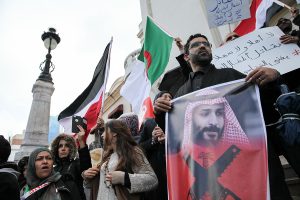
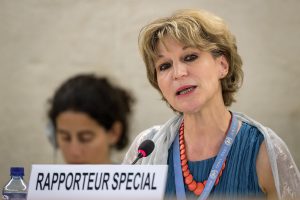


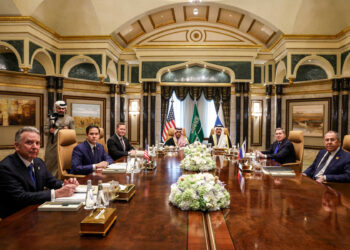

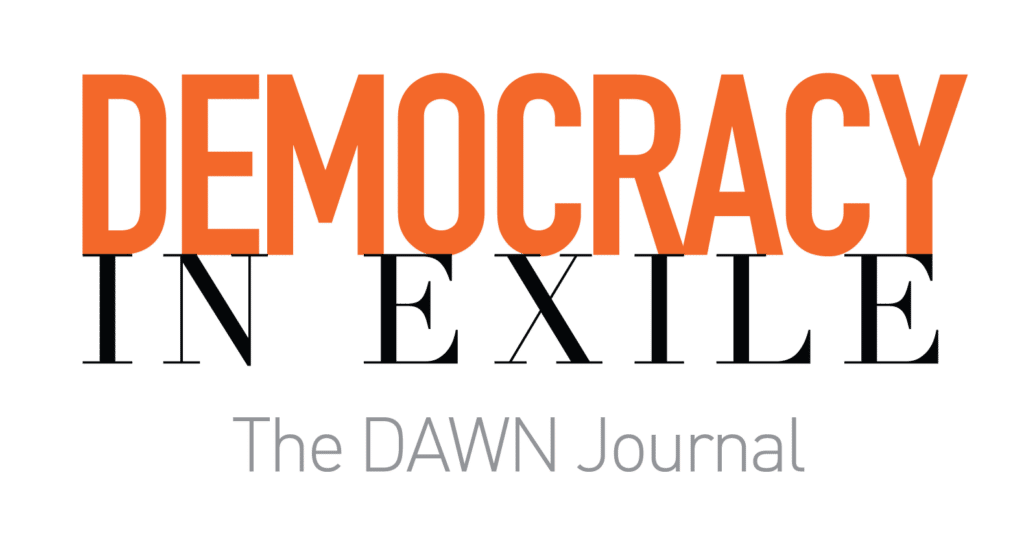





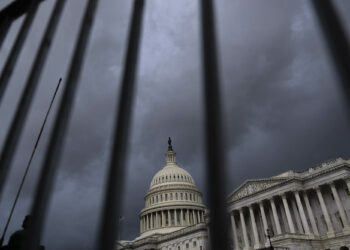





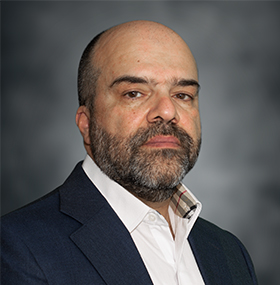






![Security forces loyal to the interim Syrian government stand guard at a checkpoint previously held by supporters of deposed president Bashar al-Assad, in the town of Hmeimim, in the coastal province of Latakia, on March 11, 2025. Syria's new authorities announced on March 10, the end of an operation against loyalists of deposed president Bashar al-Assad, after a war monitor reported more than 1,000 civilians killed in the worst violence since his overthrow. The Syrian Observatory for Human Rights said the overwhelming majority of the 1,068 civilians killed since March 6, were members of the Alawite minority who were executed by the security forces or allied groups. (Photo by OMAR HAJ KADOUR / AFP) / “The erroneous mention[s] appearing in the metadata of this photo by OMAR HAJ KADOUR has been modified in AFP systems in the following manner: [Hmeimim] instead of [Ayn Shiqaq]. Please immediately remove the erroneous mention[s] from all your online services and delete it (them) from your servers. If you have been authorized by AFP to distribute it (them) to third parties, please ensure that the same actions are carried out by them. Failure to promptly comply with these instructions will entail liability on your part for any continued or post notification usage. Therefore we thank you very much for all your attention and prompt action. We are sorry for the inconvenience this notification may cause and remain at your disposal for any further information you may require.”](https://dawnmena.org/wp-content/uploads/2025/04/syria-22039885951-360x180.jpg)




